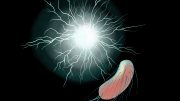Remember when the Large Hadron Collider (LHC) was going to mark the end of the world? Doomsayers claimed it would be so powerful that it would create a black hole, which would grow and envelope the entire Earth. The LHC has been operating for a while now, and last I checked the Earth is still here.
What the LHC’s scientists want is to gain more insight into how the Earth was formed, as well as the universe for that matter, and begin unlocking the secrets of what happened after the Big Bang.
At the centre of that understanding is the Standard Model of particle physics. Put simply, there are four fundamental forces that we have uncovered so far; they include: the electromagnetic force, weak and strong nuclear forces and gravity. In the world of quantum physics, the first three forces are key, but because the particles in question are so small, gravity is generally not accounted for.
This changes when zooming out of the claustrophobic, quantum physical world and into ours, where Einstein’s general relativity and gravity rein supreme.
The thing holding the standard model back is that it is extremely difficult to factor gravity into the equation. The unification of quantum mechanical world and general relativity could solve all our problems! Nonetheless, this is not the only problem physicists have with the standard model; other problems include understanding “dark-” and anti-matter.
So what is the multibillion-dollar LHC trying to figure out? It is trying to understand why particles have mass, something they plan to do by detecting the infamous “God particle” or the Higgs boson, which, they hope, will prove their theory.
And the theory? Well long story short, around the 1970s, three physicists, Robert Brout, Francois Englert and Peter Higgs, devised a theory to explain what imparted mass to things in our universe.
After much thinking, these three physicists agreed that right after the Big Bang, up until the point where the temperature fell below some critical temperature, no particles had mass. However, after the universe “cooled down,” an invisible force field, which they called the “Higgs field,” and its partner the Higgs boson formed. As a result, any particles that interacted with this field received mass via the Higgs boson.
The LHC, whose primary goal is to find the Higgs boson, is located near Geneva, Switzerland, on the border between France and Switzerland. It consists of 27 kilometres of superconducting magnets and accelerators that fire particles (either lead ions or protons, H+) to near the speed of light (they have come as close to 99.99 per cent lightspeed).
However, part of innovation and breakthrough research is to push beyond the boundaries and venture into the unknown, which unfortunately has caused some technical glitches and hiccups concerning the hardware of the particle accelerator. However, researchers are fairly confident that more breakthroughs and answers to questions will be brought forth later this year.



